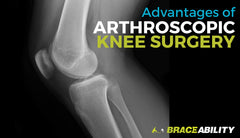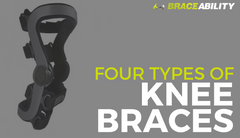Ehlers-Danlos Syndrome (EDS): Symptoms, Treatments & More
What is Ehlers-Danlos Syndrome (EDS)?
Ehlers-Danlos Syndrome (EDS) is a fascinating but puzzling condition. EDS encompasses a cluster of inherited disorders that affect how our body's connective tissues function, primarily affecting the skin, joints, and blood vessel walls. These tissues act like the glue that holds our body together, ensuring everything stays in place.
When someone has EDS, it can cause a variety of issues. Their skin might be stretchier than usual, their joints might be extra flexible (sometimes to the point of dislocating easily), and their blood vessels might not be as strong as they should be. This condition isn't always easy to spot because it can manifest in different ways for different people. Some might have very bendy joints, while others might have fragile, almost see-through skin.
Understanding EDS isn't just about recognizing the signs and symptoms. It's also about realizing how it affects people's lives and how we can better support them. By learning more about EDS, we can show more empathy and provide better assistance to those living with it. Let's explore together to shed light on this condition and make a positive difference for those affected by it.
Recognizing Ehlers-Danlos Syndrome: Common Signs and Symptoms
To gain a comprehensive understanding of Ehlers-Danlos Syndrome (EDS), it's essential to familiarize yourself with its common signs and symptoms. This knowledge will help you more effectively recognize the condition and understand its impact.
Here are some of the most prevalent signs and symptoms of EDS:
- Overly flexible joints
- Easy bruising
- Loose and unstable joints
- Thin or stretchy skin
- Joint or muscle pain
- Unusual scarring
The sole cause of EDS is a genetic defect affecting the production of collagen within the body’s connective tissues. This defect may stem from familial inheritance or spontaneous gene mutations. Diagnosis for EDS can involve a blood test, a mobility test, or both in some cases. Seek medical attention if one or more of the above symptoms are present. Although there is no cure for Ehlers-Danlos, symptoms can be managed through the use of medical braces, medication, or physical therapy.
In-Depth Look at EDS
Ehlers-Danlos Syndrome is a genetic condition, most commonly inherited as a dominant trait. EDS is a genetic connective tissue disorder that primarily affects the skin, joints, and blood vessel walls. EDS also affects the body’s ability to produce collagen. Collagen is the most abundant protein in the body, responsible for providing structure and support to the body’s tissues, such as the skin, bones, ligaments, and tendons. However, those with EDS have collagen that is weaker than it should be.
This lack of supportive tissue and collagen leads to a variety of symptoms, ranging from joint overflexibility to unusual scarring in the affected areas. EDS is a rare condition, occurring in about 1 in 5,000 individuals. There are several different types of Ehlers-Danlos Syndrome, each with its own set of symptoms and genetic causes. These types range from the more common hypermobility type, which primarily affects the joints, to the vascular type, which can have more serious consequences due to the risk of blood vessel and organ rupture.
Exploring EDS Forms: What Are the Different Types of Ehlers-Danlos Syndrome?
Ehlers-Danlos Syndrome (EDS) is a complex group of genetic disorders classified into 13 distinct types, each with unique features and genetic causes. These types are as follows:
- Classical EDS (cEDS)
- Classical-like EDS (clEDS)
- Cardiac-valvular EDS (cvEDS)
- Vascular EDS (vEDS)
- Hypermobile EDS
- Arthrochalasia EDS (aEDS)
- Dermatosparaxis EDS (dEDS)
- Kyphoscoliotic EDS (kEDS)
- Brittle Cornea Syndrome (BCS)
- Spondylodysplastic EDS (spEDS)
- Musculocontractural EDS (mcEDS)
- Myopathic EDS (mEDS)
- Periodontal EDS (pEDS)
The three most common forms of EDS are Hypermobile EDS (hEDS), Classical EDS (cEDS), and Vascular EDS (vEDS), so let’s break them down a bit further:
Hypermobile EDS (hEDS)
Representing 80-90 percent of all EDS cases, Hypermobile EDS is the most common, as well as least severe, form of EDS. Although symptoms of hEDS can start showing at any age, they most commonly appear during childhood or adolescence.

Symptoms of hEDS include:
- Overly flexible joints
- Loose joints that are prone to dislocation
- Joint pain
- Chronic fatigue
Rather than increasing in severity during aging, hEDS just changes forms. Characterized by a hypermobility phase, a pain phase, and a stiffness phase, the symptoms of hEDS can change throughout a lifetime.
Classical EDS (cEDS)
Classical EDS (cEDS) is the second most common form of EDS, although much less common than Hypermobile EDS. Symptoms of cEDS often show up in the birth to childhood years.
Symptoms of cEDS include:
- Hypermobile joints
- Stretchy, fragile skin
- Atrophic (indented) scarring
- Bruising

Although cEDS shares the symptom of hypermobility with hEDS, their main differences lie in the skin. Those with Classical EDS have stretchy skin prone to scarring and/or bruising.
Vascular EDS (vEDS)
The third most common (but still extremely rare) form of EDS is Vascular EDS. Showing up in 1 of every 250,000 people, vEDS begins to show symptoms in late childhood and can be very severe.
Symptoms of vEDS include:
- Circulatory problems
- Fragile internal organs
- Skeletal changes
- Organ rupture
- Extremely visible veins

Like the other types of EDS, vEDS patients tend to bruise easily. Circulatory problems are also common in individuals with Vascular EDS, often resulting in high blood pressure and problems with heart valves. Fragile internal organs are more prone to rupture, causing internal bleeding. People with vEDS often experience skeletal changes, such as a sunken (funnel) chest.
Understanding the Reasons Behind EDS: What Causes Ehlers-Danlos Syndrome?
Breaking down the cause of EDS is actually quite simple, there is only one main cause behind the syndrome. The only cause of Ehlers-Danlos Syndrome is a defect within the gene that is responsible for the production of the body’s collagen.
To get technical, the cause behind Ehlers-Danlos can differ slightly by type. Some types of Ehlers-Danlos are inheritable, meaning parents can pass them on to their children. Other types of EDS happen randomly and cannot be passed on from generation to generation of a family.
Who's at Risk? Understanding the Demographics of Ehlers-Danlos Syndrome (EDS)
Each type of Ehlers-Danlos Syndrome has a different prevalence within the human population. Hypermobile EDS is the most common type. hEDS represents nearly 90% of all EDS cases, affecting about 0.02-0.03% of the population.
Classical and Vascular EDS are much more rare. In fact, cEDS only affects about 0.0025-0.005% of the population, and Vascular EDS affects about 0.0005-0.001% of the population. Every other type of EDS is extremely rare, affecting less than one in one million people.
In terms of gender distribution, the majority of EDS cases are reported in females, with about 30% of cases occurring in males. However, EDS occurs across all ethnic backgrounds with no particular predisposition, indicating that the syndrome has a global and diverse impact.
Ehlers-Danlos Syndrome Diagnosis
The types of tests performed for EDS depend on the type of EDS suspected. For example, Hypermobile Ehlers-Danlos cannot be tested via blood tests but requires a hypermobility test.
A physician or physical therapist can perform this hypermobility test. The diagnostic process involves looking for signs of hypermobility, faulty connective tissue, and musculoskeletal issues. The physician may also examine a family history during the diagnosis.
The other types of EDS are all tested for via blood tests. During the blood test, signs of the genetic mutation that causes Ehlers-Danlos Syndrome will be checked for. To rule out Vascular EDS, an Echocardiogram may be performed to ensure the heart is functioning properly.
Ehlers-Danlos Treatment Options and Strategies
There is no definitive cure for EDS. The good news is that there are ways to manage it. Below are some of the most popular ways that patients can ease their pain.
Managing Hypermobility
One of the best strategies to treat hypermobility in any joint is to prevent hyperextension. The issue of hyperextension can become especially apparent during sleep. For knee and leg-related hyperextension, this Hyperextension Knee Brace is designed to keep the knee immobile, making it the perfect choice to prevent hyperextension. If you’re looking for arm or elbow hyperextension relief, this Elbow Brace is a great choice.

EDS Medications
Another popular treatment strategy is through medication. A doctor may prescribe medications to help manage pain if the pain is severe and the injury is acute. Otherwise, over-the-counter medications such as acetaminophen (Tylenol) or ibuprofen (Advil, Motrin IB) may be taken to manage pain if approved by a doctor. Your doctor may suggest other medications, such as blood pressure medication, due to the fact that Ehlers-Danlos Syndrome puts increased stress on your blood vessel walls.
Ehlers-Danlos Syndrome, Exercise, and Physical Therapy
Your doctor may recommend a variety of physical therapy exercises specifically designed to manage Ehlers-Danlos Syndrome (EDS) according to your needs and abilities. It is crucial not to exacerbate symptoms during exercise. However, exercising with EDS is certainly achievable.
Here are some low-impact and beneficial exercises:
- Swimming
- Cycling
- Brisk walking
- Pilates
Before beginning any exercise regimen, consult with your doctor to minimize the risk of injury.
In Closing: Advocating for a Life of Possibility with Ehlers-Danlos Syndrome
Ehlers-Danlos Syndrome (EDS) is a group of hereditary disorders affecting connective tissues, with symptoms including hypermobile joints, easy bruising, and stretchy skin. It arises from genetic defects in collagen production, either inherited or through mutations.
Diagnosis involves blood tests or mobility assessments, and treatment focuses on symptom management, including braces, medication, and physical therapy. The syndrome has various types, such as hypermobile, classical, and vascular, each with distinct characteristics and prevalence rates.
With advances in medical research and a growing awareness of EDS, individuals affected by this syndrome can lead fuller, more manageable lives. Empowered by knowledge and supported by appropriate medical care, people with EDS can navigate the intricacies of the condition, optimizing their health and quality of life.




